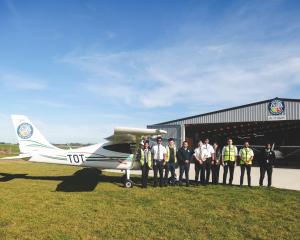
Gisborne - Tairāwhiti - ‘‘First to see the light’’, as the marketing tagline says, making Gisborne the first city on the mainland to see the sunrise each day.
Of course, the Chatham Islands are actually the first part of NZ to see the sunrise each day, situated as they are, roughly 800km east of NZ (and in a little known fact, 45 minutes ahead of NZ mainland time).
Technically they lie over the Greenwich meridian but international convention kinks the international date line to the east so they remain in the same hemisphere as the mainland. Geography lesson over, but we can safely say that the Gisborne wine region is the most easterly in NZ and certainly the first NZ wine region to see the light.
Gisborne has a long history of grape growing and winemaking (pre-dating the first plantings in Marlborough in 1973 and well in advance of modern developments in Central Otago) It is now the fifth-largest vineyard region in the country, its 1330ha planted making up roughly 3% of our total national vineyard. Chardonnay remains the dominant grape variety with 540ha, while the ‘‘top three’’ of chardonnay, sauvignon blanc and pinot gris make up 90% of plantings.
Gisborne was the engine room of the burgeoning table wine market from the 1970s to 1990s, its significant plantings of the then popular Muller-Thurgau supplanting the fortified wines that had been popular previously.
With more than 80% of the grapes produced by growers, the majority of the fruit was trucked to industry giants such as Montana and Corbans in Auckland. The vine pull scheme of 1986 saw Gisborne plantings diminish from 2000ha to 1400ha, a good portion of that Muller-Thurgau, further dropping to 1200ha by the late 1990s. The focus then shifted to chardonnay with increasing plantings going in.
Marlborough and Hawke’s Bay finally surpassed Gisborne in grape production in 1995 and 2004 respectively while today a sizable proportion of the fruit goes into labels destined for export. As a consequence, and with the number of smaller growers, we don’t see a lot of wines from this area in the South.
A treat for me to try these wines from Matawhero; suitably historic in that their first vintage by the Irwin family was in 1975 with the current owners, Kirsten and Richard Searle taking the reins in 2008. Given the tough times the Gisborne region suffered with Cyclone Gabrielle in 2023, it’s good to give them some love.
2022 Matawhero Church House
Single Vineyard Gisborne Chenin Blanc

Price RRP $28
Rating Excellent
Attractive, fragrant
nose, quince, red
apple, a whisper of
hard candy. Textural
richness, echoes the
nose adding hints of
marmalade. Fruit
sweetness, yet a tangy
quality that adds
freshness, good carry
and a nice example of
the grape. Re-visiting
shows a hint more
sweetness, nicely
balanced by bright
acidity. Well done and
drinking very nicely.
2022 Matawhero Church House
Barrel Fermented Gisborne Chardonnay

Price RRP $31
Rating Excellent
A sense of richness yet
refinement, ripe tropical
fruits, nicely backed by
light oak seasoning.
The palate is generous,
lots of flavour here, a
touch of banana skin
and dried pineapple
melding with the other
tropical fruits, while the
fine line of acidity gives
this nice zestiness.
Excellent integration,
well made and crying
out to be enjoyed now.
2023 Matawhero Single Vineyard
Naturally Dry Farmed Merlot

Price RRP $22.50
Rating Very Good
Red berries and
raspberry lead,
crushed leaf, fruit
pastille. Those fruit
characters transfer to
the palate, while a
lead pencil driven
character
emphasises the firm
structure. Light to
medium-weight, this
grows and fleshes
out with aeration
though is still crying
out to be paired with
some food.












